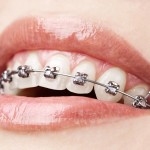
The application of dental bonding to orthodontics had had a significant impact on with bonded appliances replacing multi-banded systems. With the development of bonding systems there is increasing interest in 1-step systems. These self-etch systems (SEPs) are used by about 30% of American practitioners and are thought to reduce chair-side time. The aim of this reviews was to compare 1-step and 2-step bonding procedures with respect to attachment failure rates and time taken to place attachments.
What did they do
The Medline, Embase, Cochrane Oral Health Group’s Trials Register,and Cochrane Central Register of Controlled Trials (CENTRAL) databases were searched with no language restrictions. Unpublished literature was searched on ClinicalTrials.gov, the National Research Register, and Pro-Quest Dissertation Abstracts and Thesis database. Authors were contacted when necessary, and reference lists of the included studies were screened. Randomized clinical trials (including split mouth) directly comparing self-etch and acid-etch primers including patients with full-arch, fixed, and bonded orthodontic appliances (not banded) with follow-up periods of at least 12 months were included. Data abstraction was conducted independently by two authors, with disagreements resolved by a third. Quality was assessed using the Cochrane Risk of Bias tool.
What did they find
- Of the 11 studies meeting the inclusion criteria; 6 were excluded because of a high risk of bias.
- Relatively low statistical and clinical heterogeneity was observed among the 5 randomized clinical trials (n =3444 brackets) comparing acid-etch (1721 brackets) with self-etch primers (1723 brackets).
- A random effects meta-analysis demonstrated a tendency for a higher risk of failure (odds ratio, 1.35; 95% CI, 0.99-1.83; P = 0.06) with self-etch primers.
- A small but statistically significant time saving was also associated with the self-etch primer technique (weighted mean difference, 23.2 seconds per bracket; 95% CI, 20.7-25.8; P<0.001).
- There was insufficient evidence to assess the effect of bonding modality on demineralization rates.
The authors concluded
There is weak evidence indicating higher odds of failure with self-etch primer than acid etch over 12 months in orthodontic patients, and there is strong evidence that a self-etch primer is likely to result in a modest time savings (8 minutes for full bonding) compared with acid etch
Links
The review protocol is registered on the Prospero Database Protocol: CRD42011001601
Fleming PS. Ama Johal A, Pandis N. Self-etch primers and conventional acid-etch technique for orthodontic bonding: A systematic review and meta-analysis. Am J Orthod Dentofacial Orthop 2012;142:83-94
